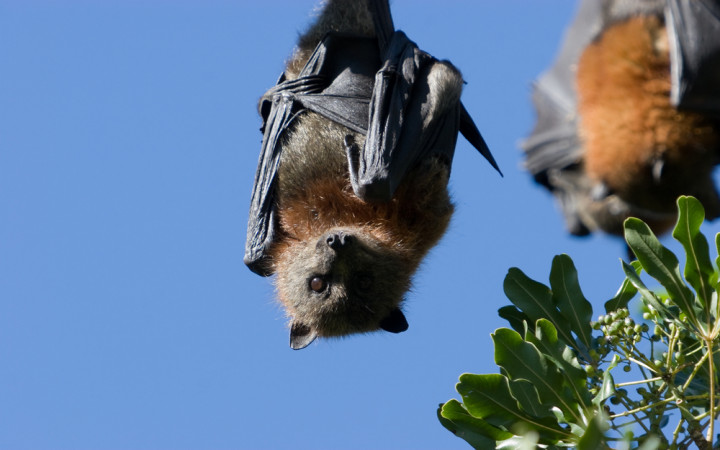As Halloween approaches, you're probably seeing a lot of bats. Whether hanging in school hallways as decorations or displayed in store candy aisles, bats have become a symbol of Halloween spookiness. But do they deserve this reputation?
They're certainly unique animals. Bats are the only mammals that can fly, yet they spend much of their lives hanging upside down.
Since they are usually only active at night (or dusk or dawn), their flapping wings and interesting faces have long been associated with creepy caves and haunted houses. However, most bat species are completely harmless to human beings.
Many people believe that bats hang out in caves and only come out at night because they are blind. In fact, you may have heard someone use the phrase “as blind as a bat" from time to time.
As it turns out, that is just a myth. Most bats see just fine, and in fact, many bat species have very good vision.
So do bats have super eyes that allow them to see in the dark? Not quite! Although bats do use their eyes to help guide them when they fly, they also use their ears.
If you're wondering how it's possible to use your ears to help “see" in the dark, it's all very scientific. When bats become active from dusk until dawn, they fly around hunting for food. Most bats feed on small, flying insects.
Catching flying insects in the dark is a bit of a challenge, but bats have developed a special way of using sound waves to help them navigate and catch prey. This method is called echolocation.
If you've ever shouted into a cave or a canyon or even an empty garage, you've heard your voice bounce back to you as an echo. When hunting for insects, bats use the power of echoes to help them find food.
Bats emit sounds from their mouths and noses as they fly. These sounds are so high in pitch that they can't be heard by human ears.
As those sounds bounce off of objects in front of them, such as trees or insects, bats hear the echoes that return. Bats' brains are able to figure out how long it takes an echo to return.
Using the time of the echo's return, a bat is able to tell how far away an object is. Believe it or not, bats' brains are advanced enough that they can also tell where the object is, how big it is, and what direction it's moving in!
It's a good thing bats are so good at locating insects in the dark. Without them, we'd struggle with more insects than we could handle.
Brown bats — one of the most common species in North America — can eat up to 1,200 mosquitoes in an hour. Colonies of Mexican free-tail bats living in Texas have been known to eat up to 30,000 pounds of insects in a single night!
Not only do these bats get rid of pesky insects, they provide a valuable service to farmers by eating insects that damage crops. Some bats also serve an important role as pollinators for over 300 species of fruit.




